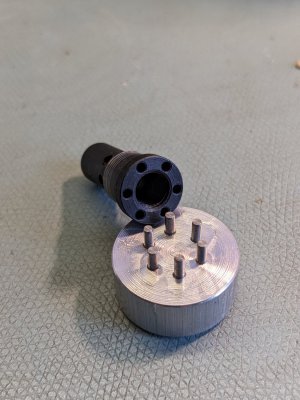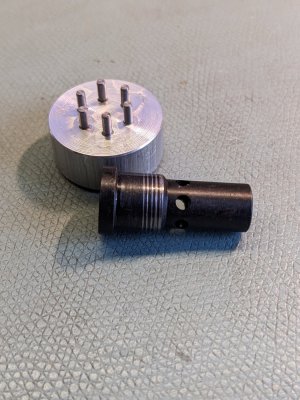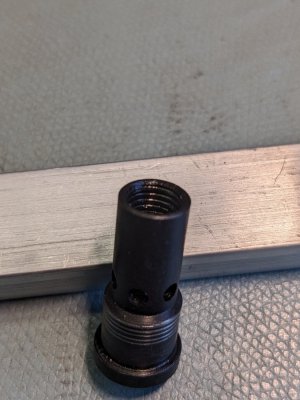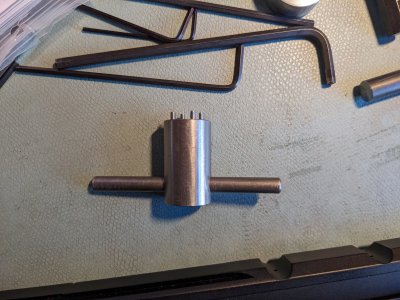- Joined
- Feb 1, 2015
- Messages
- 9,608
I have drilled clearance or slip fit starter holes for press fitting small pins. I drill them a few mm deep which is enough to ensure the pin starting straight. For a small pin like you are using, I would make a tool with a socket to retain the pin, leaving maybe four mm exposed. Then I would center the pin on the hole and press in with the tool as far as I could, then remove the tool and press in to the required depth. The tool will keep the pin straight as you press until it is seated deep enough to remain true.
For small holes, my go to drills are carbide p.c. drills. They only have around 3/8" working length but is enough to start a straight hole. Then I will follow with a HSS drill to required depth.
For small holes, my go to drills are carbide p.c. drills. They only have around 3/8" working length but is enough to start a straight hole. Then I will follow with a HSS drill to required depth.





